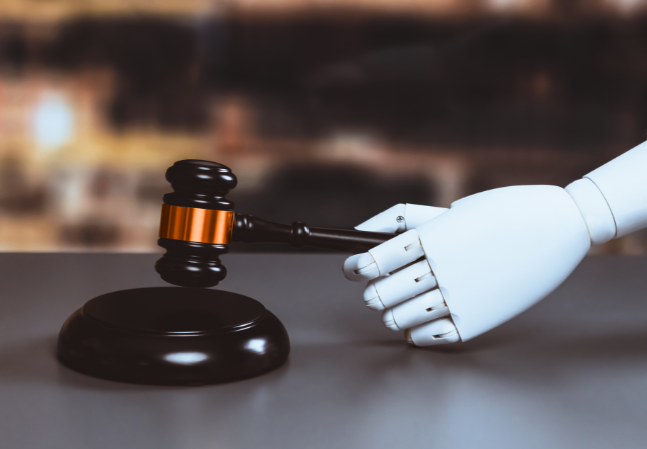- videocam On-Demand Webinar
- signal_cellular_alt Intermediate
- card_travel Personal Injury and Med Mal
- schedule 90 minutes
Personal Injury Opening Statements and Closing Arguments: Preparing and Delivering, Handling Objections and Related Motions
Developing and Presenting a Persuasive Roadmap; Delivering a Convincing and Memorable Case Summation
Welcome! Save 30% on all CLE, CPE, and Professional Skills webinars, plus 15% off any annual pass with code HOLIDAY25
About the Course
Introduction
This CLE course will guide personal injury litigators in preparing and delivering effective opening statements and closing arguments. The panel will discuss strategies for proper timing and sequencing of opening statements and closing arguments, making and responding to objections during opening and closing, and bringing and defending motions related to conduct or assertions during opening statements or closing arguments.
Description
Opening statements and closing arguments influence jurors' perceptions of the theories, facts, and evidence in personal injury litigation. A superbly prepared and delivered opening statement and closing argument can lead to a successful outcome, while a catastrophic opening or closing may doom a case.
According to published reports, a significant majority of jurors make up their minds during opening statements for a case. Opening statements are most influential when personal injury counsel employs creative storytelling techniques and appropriate visual or technological aids, introduces controversial or disputed topics before the opposing side has the opportunity to do so, and avoids the common mistakes of argument, exaggeration, and misrepresentation.
Closing argument is the personal injury litigator's final opportunity to convince jurors to rule in their client's favor. Closing statements should be memorable, as with Johnny Cochran's infamous line, "If it doesn't fit, you must acquit," persuasive, display passion and confidence, and involve demonstrative visual aids.
Personal injury attorneys must be strategic and thoughtful about the organization and timing of opening statements and closing arguments. Plaintiff counsel must be well versed in how to make and respond to objections during opening and closing and how to properly bring or challenge motions related to conduct or assertions during opening statements and closing arguments.
Listen as our authoritative panel of personal injury attorneys discusses proven techniques for preparing and delivering opening statements and closing arguments and related issues.
Presented By

Mr. Brusca dedicates his practice to representing vulnerable individuals and their families in wrongful death, catastrophic injury, negligence and abuse claims arising in nursing homes, assisted living facilities, psychiatric facilities, hospitals, boarding and group homes. He is a frequent lecturer to lay organizations and fellow attorneys at the state and national level on topics such as facility selection, resident care, litigation, trial practice, and technology issues.

Mr. Conn is a seasoned attorney specializing in complex cases covering a wide range of legal issues. Prior to starting Conn Law Firm, he spent a decade at a renowned high-stakes trial firm, following the completion of his J.D. at the University of Georgia School of Law and his B.B.A. at the University of Georgia’s Terry College of Business. Mr. Conn focuses on complex civil litigation, with a particular emphasis on catastrophic injury cases and other complex torts. He has a proven track record litigating and trying cases involving commercial motor vehicle accidents, products liability, medical malpractice, road defects, severe burn injuries, toxic torts, business torts, and more.

-
This 90-minute webinar is eligible in most states for 1.5 CLE credits.
-
Live Online
On Demand
Date + Time
- event
Tuesday, June 24, 2025
- schedule
1:00 p.m. ET./10:00 a.m. PT
I. Opening statements
A. Key elements of opening statements
B. Use of visual/technological aids
C. Common pitfalls during opening—arguments, exaggeration, misrepresentation, etc.
D. Common objections during opening
II. Closing arguments
A. Key elements of closing arguments
B. Using visual/technological aids
C. Common pitfalls during closing
D. Common objections during closing
III. Novel approaches to visual/technical/demonstrative materials
The panel will review these and other high priority issues:
- What are primary considerations for personal injury litigators when preparing opening statements?
- What common pitfalls do litigators encounter with opening statements?
- What are some practical strategies for personal injury litigators when delivering closing arguments?
- What types of objections are often raised by attorneys during opening statements or closing arguments?
- What are some best practices for bringing and defending motions in limine, motions for mistrial, and other motions related to conduct or assertions during opening statements or closing arguments?
Unlimited access to premium CLE courses:
- Annual access
- Available live and on-demand
- Best for attorneys and legal professionals
Unlimited access to premium CPE courses.:
- Annual access
- Available live and on-demand
- Best for CPAs and tax professionals
Unlimited access to premium CLE, CPE, Professional Skills and Practice-Ready courses.:
- Annual access
- Available live and on-demand
- Best for legal, accounting, and tax professionals
Unlimited access to Professional Skills and Practice-Ready courses:
- Annual access
- Available on-demand
- Best for new attorneys
Related Courses
Recommended Resources

Making Continuing Education Work for You, Anytime, Anywhere
- Learning & Development
- Career Advancement

Getting the Most Out of BARBRI Resources
- Learning & Development
- Business & Professional Skills
- Talent Development


